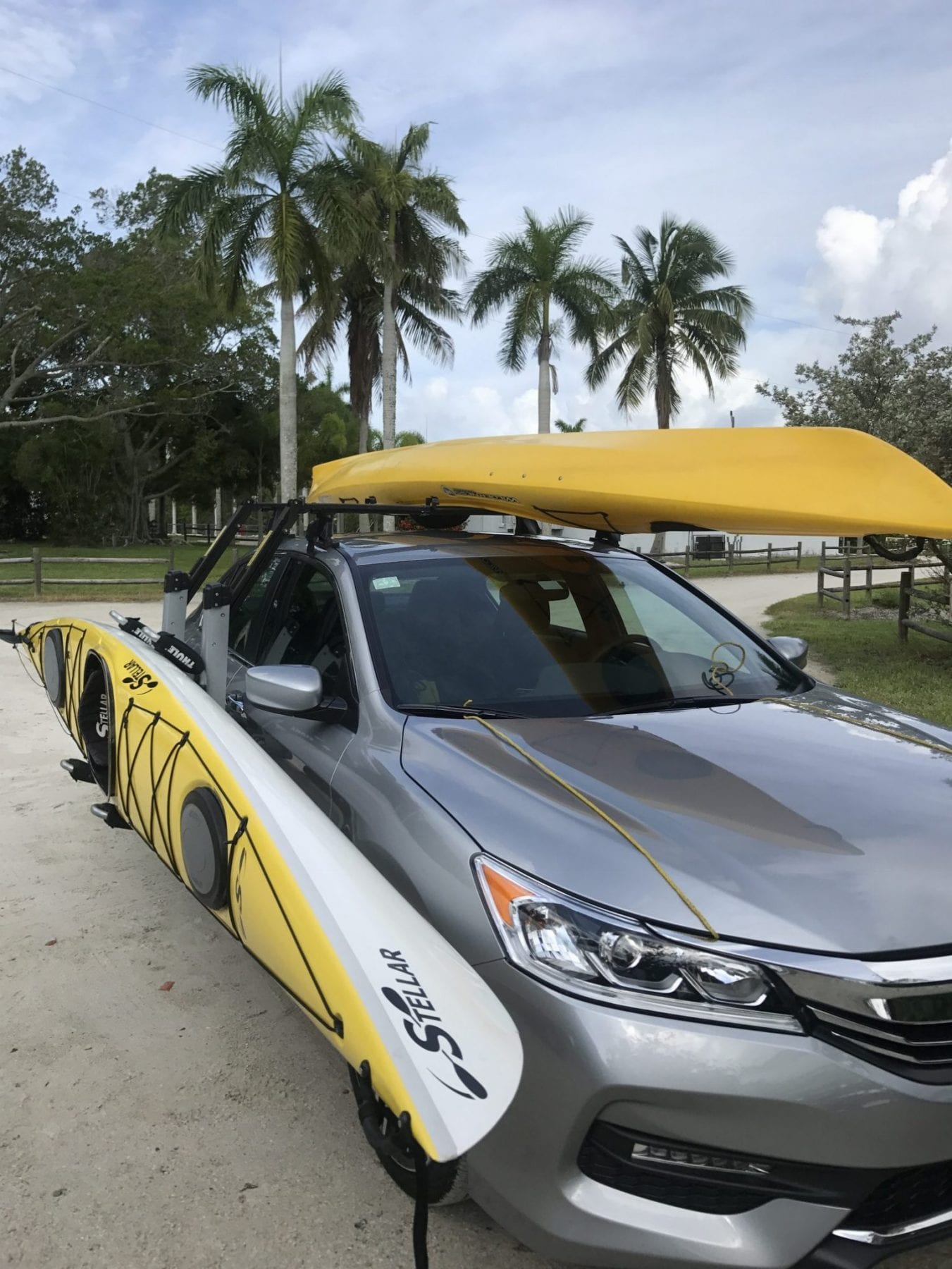by Dan Carns
One of the biggest decisions to make when purchasing a new kayak is how you plan to move it to the water. This decision will depend on whether you drive a car, truck or SUV and how much weight can you handle. The three main choices are roof rack, truck bed and Kayak trailer.
The simple roof rack with straps is probably the most common, but you must be able to lift your kayak up over your head or get help. There are some very good roof rack systems that act like cradles for your boat, typically these stow your kayak seat up or on edge, but remember if it is a sit-inside kayak, you may want a cockpit cover as you don’t want to fill it up with rain water! Some of these can be loaded from the back so you simply lift the bow up to the back rail to lift and push the boat into place. The new lift assist rack systems for cars and SUV’s is the most convenient to help you load. The primary function is to lower or raise the pivoting cradle with your kayak from the stored location on your vehicle to the side so that it is waist high, from here it’s a simple matter of lifting on and off. Remember these are lift assist systems that carry about half the weight, so you still need to be able to lift some weight.
If you drive a truck it seems simple enough to drop the tailgate and load up, but remember to place a red flag off the end as some kayaks are quite long and some truck beds are very short. There are also the new t-bone style bed extenders that simply plug into your trailer hitch to help carry the back end of the boat.
As you may know, the new Sit-On-Top kayaks dedicated to fishing come with an array of gear options and once outfitted these kayaks can weigh up to one hundred pounds or more. These kayaks are more and more peddle drive, as its easier to peddle this much weight and they are wider than conventional kayaks for standing stability. Kayak trailers are a great option for these rigs and may be your only choice, of course any vehicle with a trailer hitch can pull these. Companies are designing and building these dedicated trailers with additional storage for gear including rod lockers and additional lock boxes. Many launches are unimproved without ramps, but usually pretty good access, so that you can pull you kayak and trailer close to the water.
All in all, kayak fishing has some distinct advantages over boat fishing; it is less expensive, as it requires no motor or gas and often there is no fee to launch! Do some homework, visit or rent from an outfitter so you really understand what it takes to handle and transport you new kayak!

